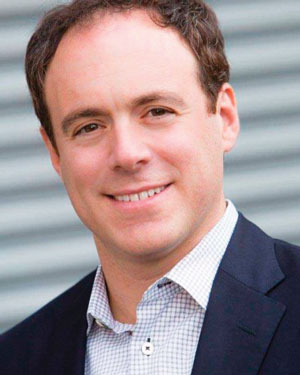Making good on Mayor Bill de Blasio’s promise to tackle the city’s rising income inequality is not just a professional goal for the newly appointed president of the city Economic Development Corp. For Maria Torres-Springer, it’s a personal one, too.
The first woman to head the EDC was raised in Alameda, California, the daughter of Filipino immigrants. Torres-Springer recalls a home with “very modest means” — her mother worked as a bank teller, and her father was a fingerprint technician at the police department, among other jobs. She worked her way through Yale, then grad school at Harvard.
“I went to the East Coast without ever having seen snow, and with about $200 in my pocket, which was really the only money anyone in my family ever had. My dad, he got me this mink shawl from a thrift store, because he had no idea what one wore,” she said with a laugh.
“Those experiences informed not only who I am,” she continued, “but also my belief, my really profound belief, that we can, and should, be unlocking potential in people and communities.”
NYC’s resiliency and income problem
Torres-Springer, 38, moved to New York after graduating from Yale to work in affordable housing, just one week before the Sept. 11 attacks.
“I hadn’t spent much time in New York” before that, she said. “It was a very formative, very extraordinary experience, and I immediately felt like a New Yorker.”
In the 14 years since, she has seen firsthand the city’s resiliency in the face of terrorism and recessions. What troubles her is that economic gains made since the 2008 downturn coincide with an increase in the number of poor people in the city, a reversal of what happened in the two previous recoveries.
“While there has been a recovery, there hasn’t been a recovery for everyone,” she said. “We want to insure the benefits of that recovery accrue to the largest number of people across the city.”
Since taking over as EDC chief in July, she has honed a two-pronged strategy to focus on strengthening neighborhoods and supporting certain industries to create an economy that she describes as resilient, globally competitive, equitable and inclusive.
“Those are characteristics that some people might say don’t go together, but I refuse to believe that,” she said.
Detailed plans
On the neighborhood side, a number of the areas where EDC is focusing its efforts directly involve the real estate industry. Torres-Springer said the aim is to create mixed-use communities where people of different incomes and backgrounds can work and live.
In Coney Island, for instance, the agency aims to finish the redevelopment started under the Bloomberg administration by adding housing and more commercial and retail space to the revived, tourist-friendly amusements. Infrastructure improvements are underway to lay the necessary groundwork for this development. So far, the de Blasio administration has committed more than $180 million for the infrastructure work and other projects.
The agency is also working in the Lower Concourse in the Southwest Bronx to identify its most pressing infrastructure and business needs. A study will reveal how the EDC might encourage public and private investment in the area.
EDC is also leading neighborhood planning efforts to determine the business, housing and infrastructure needs of the waterfront at Sherman Creek in Inwood and downtown Far Rockaway, in much the same way it created an action plan for Jamaica, Queens, which was released in February.
In Jamaica, the EDC is working with other city agencies to achieve the plan’s objectives, including the redevelopment of a former NYPD garage on 168th Street that will include affordable housing, a community center and retail, while supporting York College’s plans to develop underutilized properties.
The agency is also studying the long-term future of Sunnyside Yards in Queens to determine the viability of building in the area, a proposal put forth by de Blasio in his State of the City address in February.
Affordable housing is an integral part of the goal for all these neighborhoods, Torres-Springer said. But that goal could become a stumbling block.

Seth Pinsky (Photo: STUDIO SCRIVO)
“I think the major challenge she is going to face is that this administration is so heavily focused on affordable housing,” said Seth Pinsky, a former head of the EDC who is now a fund manager at RXR Realty. (Torres-Springer served as Pinsky’s chief of staff when he was EDC president.) “What she will need to do is figure out how to make sure economic development is given an equally prominent role,” he said.
Torres-Springer said one way the agency aims to do that is by focusing on bolstering the growth of certain industries that support a wide range of occupations and incomes. One is life sciences. The EDC has a series of programs — from early-stage funding to redeveloping real estate for pharmaceutical, biotech and healthcare technology firms — that aim to help the industry grow.
Another key industry is fashion. During Fashion Week last month, the EDC extended its “Made in New York” marketing campaign to the industry as one of many efforts to support the designers, manufacturers and other fashion-related services that employ about 250,000 people in the city.
The EDC is also leading an effort to add five new routes to the existing East River ferry system. Starting in 2017, new routes will carry commuters from Rockaway, South Brooklyn and Astoria across the East River to several points in Manhattan. The following year, ferries will be added from Soundview in the Bronx and the Lower East Side.
In general, the agency tries to invest in infrastructure that encourages new private development in previously underserved neighborhoods.
“We always try to make sure that we leverage the maximum amount of private sector investment for the smallest amount of public sector investment,” Torres-Springer said. “And any time we design a program, it has to be informed, not by bureaucrats, but by employers and businesses.”
High praise
Those who have worked with Torres-Springer in the past say she is well-equipped to turn these high-minded concepts into reality.

Dave Lombino
“She has an exceptional track record of implementation of big ideas,” said Dave Lombino, director of special projects at Two Trees Management, who worked with Torres-Springer when she was Pinsky’s chief of staff. “Government can be a challenging environment to get big things done. It takes a certain kind of work ethic and personality and Maria really embodies that.”
Lombino noted that she oversaw the EDC department that paved the way for the NYU Center for Urban Science and Progress in Downtown Brooklyn and the Cornell University tech campus on Roosevelt Island. She also worked to lure tech companies to the city by getting the EDC to sponsor co-working space and incubators. Also, she served as the COO of Friends of the High Line, the creation of which provided a gateway for the transformation of the Far West Side.
“Honestly, I have worked with so many smart people, but Maria is one of the most capable when it came to the entire scope of the project. All of the High Line staff reported to her and her co-workers liked and respected her. She never intimidated other people or made them nervous or scared,” said Robert Hammond, co-founder of Friends of the High Line. “I’m not at all surprised that the mayor appointed her. She has a great trajectory ahead of her.”